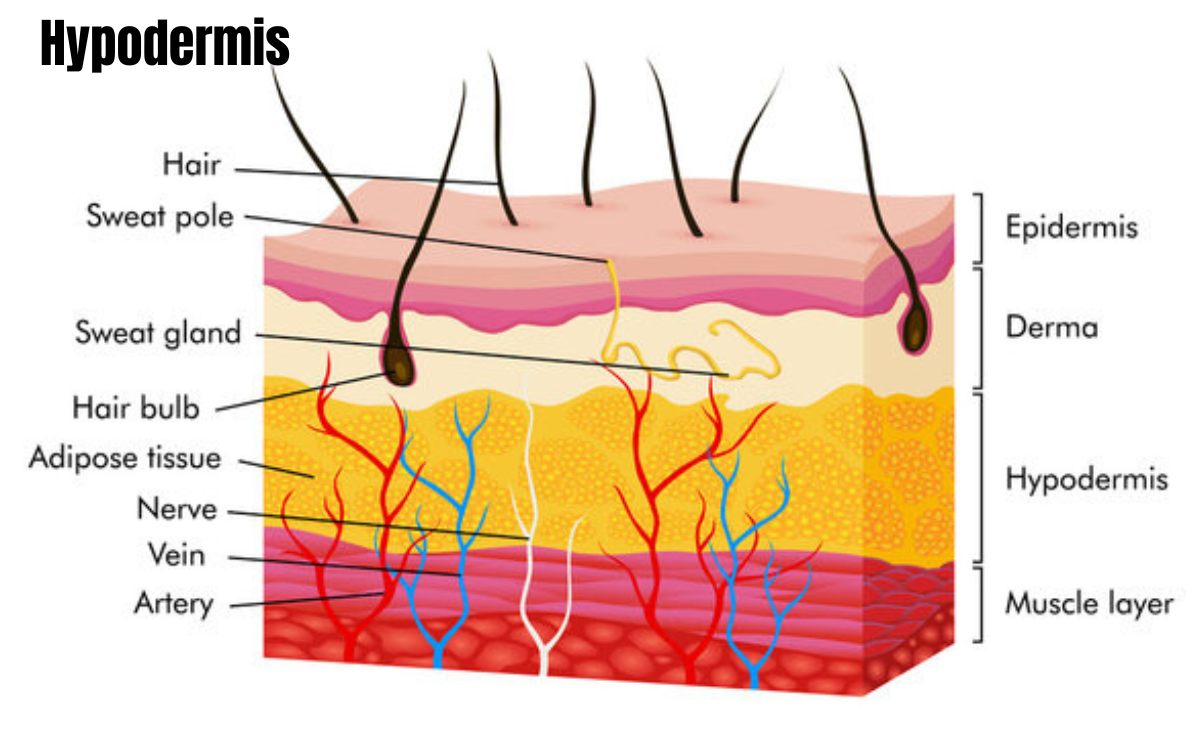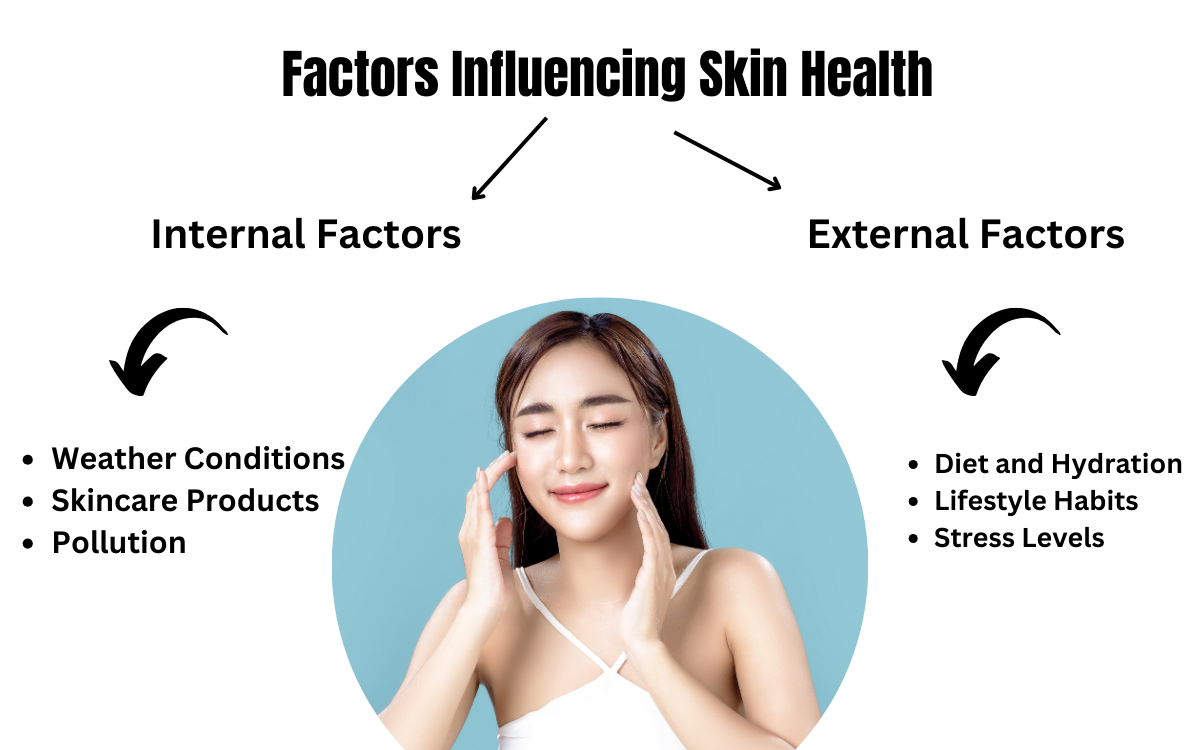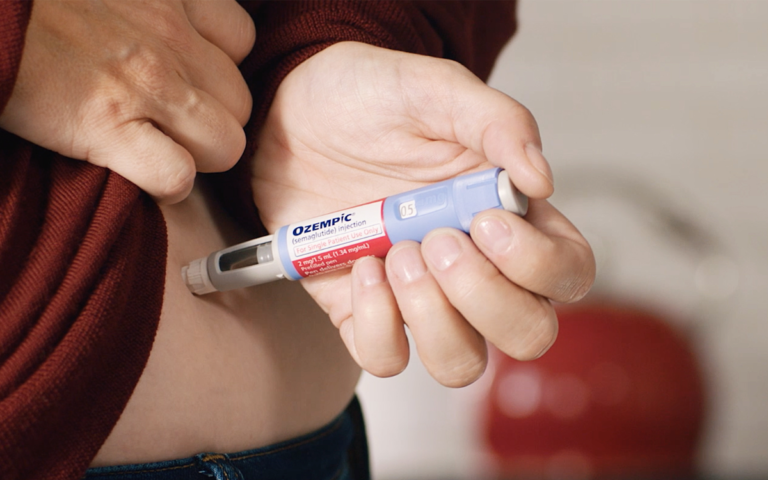How Many Skin Layers are There?
How Many Skin Layers are There?
Human skin is a remarkable organ that serves as a protective barrier, shielding the body from external threats while actively participating in various physiological functions. Understanding the intricate layers that compose the skin is crucial for appreciating its complexity and maintaining its health. This article delves into the three primary layers of the skin – the epidermis, dermis, and hypodermis – exploring their structures, functions, and the factors influencing their health.

Understanding Skin Composition
Importance of Knowing Skin Layers
Comprehending the composition of the skin is vital for appreciating its multifaceted roles. Each layer plays a unique part in maintaining homeostasis, protecting against external elements, and facilitating sensory experiences. Knowledge of skin layers is fundamental for effective skincare and addressing various dermatological concerns.
The Epidermis: Our Outer Shield
The epidermis, the outermost skin layer, acts as a formidable shield against environmental stressors. Comprising multiple sub-layers, each with distinct functions, the epidermis is a dynamic and resilient barrier.
Subdivisions of the Epidermis
Within the epidermis, two key skin layers stand out – the Stratum Corneum, forming the protective barrier, and the Stratum Basale, serving as the cellular hub responsible for skin regeneration and maintenance.
Stratum Corneum: The Protective Barrier
The Stratum Corneum is the frontline defender, preventing water loss and safeguarding against pathogens. Its composition of dead skin cells and lipids creates a formidable barrier, essential for overall skin health.
Stratum Basale: The Cellular Hub
The Stratum Basale, situated at the epidermal base, is the epicenter of cellular activity. It orchestrates the renewal of skin cells, ensuring a constant supply for the upper layers and contributing to the skin’s resilience.
Diving Deeper: The Dermis
Beneath the epidermis lies the dermis, a complex layer comprising blood vessels, nerve endings, collagen, and elastic fibers, forming the structural framework of the skin.
Blood Vessels and Nerve Endings
The dermis houses a network of blood vessels and nerve endings. Blood vessels supply essential nutrients and oxygen, while nerves facilitate sensations such as touch and temperature, showcasing the dynamic interplay of the skin’s components.
Collagen and Elastic Fibers: Skin’s Structural Framework
Beneath the epidermis lies the dermis, a structural marvel rich in collagen and elastic fibers. Collagen provides tensile strength, while elastic fibers contribute to skin elasticity, ensuring our skin can stretch and recoil without damage.
Beneath the Surface: The Hypodermis
The Role of the Hypodermis
The hypodermis, or subcutaneous tissue, serves as an energy reservoir, insulator, and shock absorber, playing a crucial role in overall skin health.
Adipose Tissue: More Than Just Fat
Often overlooked, the hypodermis is more than a layer of fat. It serves as an energy reservoir and plays a crucial role in temperature regulation. Adipose tissue insulates the body, preventing heat loss and providing a protective cushion.
Temperature Regulation and Energy Storage
The hypodermis contributes to temperature regulation by insulating the body. Additionally, it stores energy, providing a reserve during periods of increased metabolic demand.

Skin Layers in Action: Functions and Interactions
Coordinated Efforts of Skin Layers
The collaboration between the epidermis, dermis, and hypodermis is essential for the skin’s overall functionality.
Protection Against External Threats
Together, these layers form a robust defense mechanism, protecting against harmful microorganisms, UV radiation, and physical injuries.
Sensation and Communication
The intricate network of nerve endings in the dermis enables sensations, such as touch and temperature, while also facilitating communication with the nervous system.
Factors Influencing Skin Health
Skin health is not solely determined by genetics; external and internal factors play pivotal roles in maintaining vibrant and resilient skin. Understanding these influences allows us to adopt holistic approaches to skincare, ensuring our skin remains at its best. Let’s explore the myriad factors that impact the health of our skin.
External Factors
Weather Conditions
The environment we expose our skin to significantly affects its well-being. Harsh weather conditions, such as extreme cold or excessive sun exposure, can lead to dryness, sunburn, and premature aging. Adapting our skincare routine to seasonal changes is crucial.
Skincare Products
The products we use on our skin can either nurture or harm its health. Choosing appropriate skincare products, considering our skin type and specific needs, ensures that we provide the necessary care without causing irritation or adverse reactions.
Pollution
In urban environments, exposure to pollutants is inevitable. Air pollution can contribute to the formation of free radicals, leading to oxidative stress and skin damage. Regular cleansing and antioxidant-rich skincare can counteract these effects.
Internal Factors
Diet and Hydration
What we put into our bodies directly reflects on our skin. A balanced diet, rich in vitamins, minerals, and hydration, supports skin health. Dehydration can lead to dryness and a lackluster complexion, emphasizing the importance of adequate water intake.
Lifestyle Habits
Our daily habits significantly impact skin health. Regular exercise promotes circulation, delivering essential nutrients to the skin. Conversely, smoking and excessive alcohol consumption can accelerate aging processes and diminish skin vitality.
Stress Levels
The mind-body connection extends to our skin. High stress levels can trigger inflammatory responses, leading to conditions like acne and eczema. Incorporating stress management techniques, such as meditation or yoga, contributes to overall skin well-being.

Striking a Balance for Healthy Skin
Consistent Skincare Routine
Consistency is key when it comes to skincare. Establishing a regular routine that includes cleansing, moisturizing, and sun protection forms the foundation for healthy skin. Consistent care allows the skin to adapt and thrive.
Sun Protection
Sun exposure is a major contributor to skin aging and the development of skin cancer. Prioritizing sun protection through the use of sunscreen and protective clothing is essential for maintaining skin health and preventing long-term damage.
Professional Dermatological Care
Regular check-ups with a dermatologist are vital for maintaining skin health. Professional guidance ensures early detection and management of any skin issues, preventing them from escalating into more significant concerns.
In essence, achieving and maintaining healthy skin is a multifaceted endeavor that requires a holistic approach. By considering both external and internal factors and adopting proactive skincare habits, we empower ourselves to enjoy vibrant and resilient skin throughout our lives.
Understanding Skin Physiology
Dispelling common myths about skin layers, such as equating more layers with better skin, and understanding the true nature of skin’s “breathability” is essential for informed skincare choices.
Cellular Turnover
The epidermis, the outermost layer of our skin, is in a constant state of renewal. Cellular turnover in the stratum basale ensures a steady supply of new cells that migrate upwards, eventually forming the protective stratum corneum.
Barrier Function
The stratum corneum is more than a surface; it’s a dynamic barrier against external threats. Its composition of lipids and corneocytes not only shields against pathogens and environmental stressors but also prevents water loss, maintaining skin hydration.
Dermal Support
Vasculature and Connectivity
The hypodermis, rich in blood vessels, ensures efficient nutrient exchange and waste removal. This connectivity with the circulatory system contributes to the overall health and vitality of the skin.
Functional Interactions
Protection Against External Threats
The coordinated efforts of the epidermis and dermis create a robust defense mechanism. Protection against external threats, such as UV radiation and pathogens, involves intricate cellular responses and immune surveillance.
Sensation and Communication
Nerve endings in the dermis not only enable sensations but also play a role in communication. Through the skin, our body communicates with the external environment, responding to stimuli and maintaining homeostasis.
Adapting to Change: Skin Aging
Changes in the Epidermis
As we age, the epidermis undergoes alterations. Reduced cell turnover contributes to a duller complexion, and the stratum corneum may become thinner, affecting the skin’s ability to retain moisture.
Collagen and Elasticity in the Dermis
The dermis experiences a decline in collagen production and elastic fiber resilience with age. These changes result in wrinkles and sagging, highlighting the role of these structural components in maintaining skin firmness.
Advances in Understanding: Technology and Skin
Modern Techniques in Dermatology
Technological advances have revolutionized our understanding of skin physiology. 3D imaging and microscopic analysis allow for in-depth exploration, aiding dermatologists in accurate diagnosis and treatment planning.
Future Possibilities
As technology continues to evolve, the future holds exciting possibilities. Advancements in regenerative medicine and personalized skincare may reshape how we approach skin health, offering tailored solutions based on individual needs.
In essence, comprehending skin physiology unveils a symphony of cellular interactions and structural dynamics. From the protective epidermis to the supportive dermis and the versatile hypodermis, each layer plays a crucial role in maintaining the health and functionality of our skin. As we navigate the intricacies of skin physiology, we gain valuable insights into effective skincare practices and the potential for future innovations in dermatology.
Caring for Each Skin Layer: Practical Tips
Maintaining healthy and radiant skin involves a targeted approach that addresses the specific needs of each skin layer. From the protective epidermis to the structural dermis and the supportive hypodermis, here are practical tips for caring for each layer and promoting overall skin well-being.
General Skincare Guidelines
Cleansing
Gentle cleansing is essential for the epidermis. Choose a mild cleanser that removes impurities without stripping the skin of its natural oils. Over-cleansing can disrupt the skin barrier, leading to dryness and irritation.
Moisturizing
Hydration is key for the epidermis. Use a moisturizer that suits your skin type to prevent dryness and maintain the integrity of the stratum corneum. Look for ingredients like hyaluronic acid and glycerin for effective hydration.
Sun Protection
The epidermis is highly susceptible to sun damage. Apply sunscreen daily, even on cloudy days. Choose a broad-spectrum SPF to shield against harmful UV rays and reduce the risk of premature aging and skin cancer.
Tailoring Care for Specific Skin Layers
Nourishing the Dermis
Collagen and elastic fibers in the dermis benefit from specific nutrients. Include collagen-boosting foods in your diet, such as fish, berries, and leafy greens. Topical treatments containing peptides can also support dermal health.
Massage Techniques
Promote circulation in the dermis through facial massages. Gently massaging the skin encourages blood flow, delivering nutrients and oxygen. Use upward strokes to support the skin’s natural elasticity.
Importance of Regular Skin Checks
Tailoring skincare practices to the specific needs of each skin layer ensures comprehensive care. Regular skin checks further contribute to early detection of potential issues.
Self-Examinations
Regular self-examinations allow for the early detection of abnormalities in the hypodermis. Perform monthly skin checks, paying attention to any changes in moles, lumps, or skin texture. Consult a dermatologist if you notice anything unusual.
Professional Dermatological Care
Seeking professional dermatological care is crucial for maintaining the health of all skin layers. Schedule regular skin screenings with a dermatologist to assess the condition of your skin and address any concerns promptly.
Layer-Specific Treatments
Epidermal Exfoliation
The epidermis benefits from occasional exfoliation. Incorporate exfoliating products containing alpha hydroxy acids (AHAs) or beta hydroxy acids (BHAs) to remove dead skin cells and promote cell turnover. Be mindful not to over-exfoliate.
Dermal Hydration
Hydrate the dermis from within by ensuring an adequate water intake. Drink plenty of water to support the dermal matrix and maintain skin elasticity. Hydrated skin is more resilient and less prone to wrinkles.
Consistent Care for Healthy Skin
Holistic Approach
Adopting a holistic approach to skincare ensures comprehensive care for all skin layers. Combine healthy lifestyle habits with a customized skincare routine to address the unique needs of each layer.
Patience and Consistency
Visible improvements in skin health take time. Be patient and consistent with your skincare routine. Avoid frequent changes in products, allowing your skin to adapt and benefit from the chosen regimen.
By tailoring your skincare routine to the specific needs of each skin layer, you empower yourself to nurture and protect your skin comprehensively. Consistent care, regular check-ups, and layer-specific treatments contribute to the overall health and vibrancy of your skin, promoting a radiant complexion and delaying the signs of aging.
Impact of Age on Skin Layers
As the years go by, our skin undergoes a natural aging process, leading to changes in its structure and functionality. Understanding how age impacts each skin layer— from the protective epidermis to the structural dermis and the supportive hypodermis— is essential for adapting skincare routines and maintaining skin health at every stage of life.
Changes in the Epidermis
Reduced Cellular Turnover
One of the notable effects of aging on the epidermis is a slower rate of cellular turnover. The renewal of skin cells in the stratum basale diminishes, leading to a gradual thinning of the epidermis. This can result in a duller complexion and a slower healing process.
Stratum Corneum Alterations
The stratum corneum, responsible for the skin’s barrier function, undergoes alterations with age. Decreased lipid production can compromise the barrier’s ability to retain moisture, contributing to dryness and an increased susceptibility to external irritants.
Skin Conditions and Disorders of Skin Layers
Our skin, a resilient and dynamic organ, is susceptible to various conditions and disorders that can impact its health and appearance. Understanding these issues is crucial for early detection, effective management, and maintaining overall skin well-being. Let’s delve into some common skin conditions that affect different layers of the skin.
Epidermal Disorders
Acne
Acne is a prevalent epidermal condition characterized by clogged pores, inflammation, and the formation of pimples. It often arises due to excess oil production, hormonal changes, or bacterial overgrowth. Proper cleansing and targeted skincare can help manage acne.
Eczema
Eczema, or dermatitis, is an inflammatory skin condition that affects the epidermis. It manifests as itchy, red rashes, and can be triggered by various factors, including genetics, allergies, and environmental irritants. Emollients and corticosteroids are commonly used for eczema management.
Dermatological Challenges
Psoriasis
Psoriasis is a chronic autoimmune condition that affects the dermis and epidermis. It results in the rapid overproduction of skin cells, leading to thick, red patches with silvery scales. Topical treatments, phototherapy, and systemic medications are utilized for psoriasis management.
Rosacea
Rosacea is a dermal disorder characterized by persistent facial redness, visible blood vessels, and sometimes, acne-like bumps. Although the exact cause is unknown, triggers include sun exposure and certain foods. Topical medications and laser therapy are common interventions.
Hypodermal Concerns
Cellulite
Cellulite, affecting the hypodermis, results from the accumulation of fat deposits beneath the skin’s surface. It often presents as a dimpled or lumpy appearance. Lifestyle changes, massage, and certain cosmetic procedures can help minimize the appearance of cellulite.
Lipomas
Lipomas are benign tumors that originate in the hypodermis. Composed of fat cells, they usually present as soft, movable lumps under the skin. Surgical removal may be considered for cosmetic or discomfort reasons.
Navigating Skin Disorders
Dermatitis Herpetiformis
Dermatitis herpetiformis is a skin manifestation of celiac disease, impacting the epidermis. It presents as intensely itchy, blistering rashes. Gluten-free diet is the primary treatment, complemented by medications to manage symptoms.
Hives (Urticaria)
Hives are raised, itchy welts that appear on the skin, often triggered by allergies, medications, or stress. Antihistamines are commonly used for symptomatic relief, and identifying and avoiding triggers are key preventive measures.
Addressing Dermatological Concerns
Consultation with Dermatologist
For accurate diagnosis and tailored treatment plans, consulting a dermatologist is essential. Dermatologists can identify the specific nature of skin conditions, recommend appropriate therapies, and guide long-term management.
Holistic Approach to Skincare
Adopting a holistic approach to skincare involves considering lifestyle factors, including diet, stress management, and adequate sleep. These elements contribute to overall skin health and can complement medical interventions.
Understanding and addressing skin conditions and disorders requires a combination of preventive measures, proper skincare, and, when necessary, professional medical guidance. By being proactive in our approach, we can navigate these challenges effectively, ensuring our skin remains healthy and vibrant.
The Role of Genetics in Determining Skin Layers
Our skin, the body’s largest organ, is a remarkable canvas influenced by a delicate interplay of genetics and environmental factors. Understanding how genetics shapes the composition and characteristics of each skin layer is crucial in unraveling the intricacies of skincare.
Genetic Influence on Epidermal Dynamics
Varied Epidermal Thickness
Genetic variations contribute to the diversity in epidermal thickness among individuals. Inherited factors dictate how quickly skin cells regenerate in the stratum basale, impacting the overall thickness of the epidermis. This, in turn, influences the skin’s resilience and ability to withstand external stressors.
Pigmentation Traits
Skin pigmentation is heavily influenced by genetics. Genes determine melanin production, influencing skin color and response to UV radiation. Understanding these genetic nuances is crucial in crafting effective sun protection strategies tailored to individual skin tones and susceptibilities.
Genetic Components in Dermis Structure
Collagen and Elastin Variations
The dermis, responsible for skin’s strength and elasticity, exhibits genetic diversity in collagen and elastin composition. Different genetic codes can result in varying tensile strength and elasticity, influencing how prone the skin is to sagging and wrinkle formation.
Genetic Predisposition to Skin Conditions
Certain skin conditions, such as acne or rosacea, may have a genetic predisposition. Understanding familial tendencies allows individuals to anticipate potential challenges and proactively manage their skincare routines to prevent or mitigate these conditions.
Epigenetics and Skin Health
Environmental Impact on Genetic Expression
While genetics provide a blueprint, environmental factors influence how genes are expressed. Epigenetics, the study of these external influences on genetic expression, sheds light on how lifestyle choices, pollution, and diet impact skin health, adding another layer to the genetic equation.
Lifestyle Choices and Genetic Interplay
Optimal skin health is achieved through a harmonious interplay between genetics and lifestyle. Healthy habits such as a balanced diet, hydration, and stress management positively influence genetic expression, contributing to radiant and resilient skin.
Navigating Genetic Skin Predispositions
Tailoring Skincare to Genetic Makeup
Understanding one’s genetic predispositions empowers individuals to tailor their skincare routines effectively. Specific genes may influence how the skin responds to certain ingredients or treatments, allowing for a personalized approach to address unique concerns.
Genetic Consultation with Dermatologists
In the era of personalized medicine, dermatologists can provide insights into individual genetic profiles and offer tailored recommendations. This consultative approach ensures that skincare regimens align with genetic predispositions, optimizing outcomes.
The Future: Genetics and Personalized Skincare
Advancements in Genetic Skincare
The future of skincare holds the promise of personalized genetic interventions. Advancements in genetic research may lead to customized skincare products designed to address specific genetic variations, revolutionizing how we approach skincare.
Ethical Considerations in Genetic Skincare
As we delve into the realm of genetic skincare, ethical considerations regarding privacy, consent, and data usage become paramount. Striking a balance between innovation and ethical principles is crucial for maintaining trust in this evolving field.
Genetics is a guiding force in determining the intricate layers of our skin. Acknowledging and leveraging this genetic influence enables us to craft personalized skincare approaches that honor the unique qualities of each individual’s skin, fostering a harmonious relationship between genetics and skincare practices.
Environmental Impact on Skin Layers
Our skin, a dynamic shield against external factors, is constantly influenced by the environment in which we live. From ultraviolet (UV) radiation to pollutants and varying temperatures, understanding the environmental impact on each skin layer is essential for effective skincare and maintaining skin health.
Epidermal Vulnerability to UV Radiation
UV Radiation and DNA Damage
The epidermis, being the outermost layer, is particularly vulnerable to UV radiation. Prolonged sun exposure can lead to DNA damage in skin cells, potentially resulting in mutations and increasing the risk of skin cancer.
Pigmentation Changes
Environmental factors, especially sun exposure, play a significant role in pigmentation changes. UV rays stimulate melanocytes in the epidermis, leading to increased melanin production and causing tanning or the formation of sunspots.
Dermis Response to Environmental Stressors
Collagen Breakdown
The dermis, responsible for skin elasticity, is impacted by environmental stressors. UV radiation accelerates collagen breakdown, contributing to the formation of wrinkles and sagging skin. Protection against UV rays is crucial to maintaining dermal integrity.
Free Radicals and Oxidative Stress
Environmental pollutants generate free radicals that can induce oxidative stress in the dermis. This oxidative stress contributes to premature aging, emphasizing the need for antioxidants in skincare to neutralize free radicals.
Hypodermis and Temperature Variations
Cold Weather and Hypodermal Response
The hypodermis provides insulation, and exposure to cold weather can impact this layer. Cold temperatures can constrict blood vessels, leading to reduced blood flow and potentially causing skin dryness and discomfort.
Impact of Heat on Subcutaneous Fat
In contrast, exposure to excessive heat can impact subcutaneous fat in the hypodermis. Heat may stimulate sweat glands, influencing hydration levels and potentially exacerbating conditions like acne.
Pollution and Its Effect on All Layers
Epidermal Barrier Disruption
Environmental pollutants, such as particulate matter and toxins, can compromise the epidermal barrier. Disruption of this barrier may lead to increased sensitivity, dryness, and a higher susceptibility to skin conditions.
Dermal Inflammation
Pollution can induce inflammation in the dermis, contributing to conditions like rosacea and eczema. Anti-inflammatory skincare, along with protective measures like barrier creams, can mitigate these effects.
Adapting Skincare to Environmental Challenges
Sunscreen as a Protective Shield
Given the significant impact of UV radiation, daily sunscreen use is non-negotiable. Sunscreens with broad-spectrum protection safeguard against UVA and UVB rays, preserving the health of the epidermis.
Antioxidant-Rich Skincare
Antioxidants, such as vitamin C and E, counteract free radicals generated by environmental stressors. Incorporating antioxidant-rich skincare helps protect the dermis from oxidative damage and supports collagen maintenance.
Understanding the environmental impact on each skin layer equips us with the knowledge needed to make informed skincare choices. By implementing protective measures and embracing a holistic approach, we can navigate the challenges posed by the environment, ensuring our skin remains resilient and healthy.
Conclusion
In conclusion, an in-depth understanding of the skin layers is pivotal for informed skincare choices, dermatological health, and overall well-being. Emphasizing the significance of skin layer awareness encourages a proactive approach to skincare and fosters a deeper connection with our body’s largest organ.






